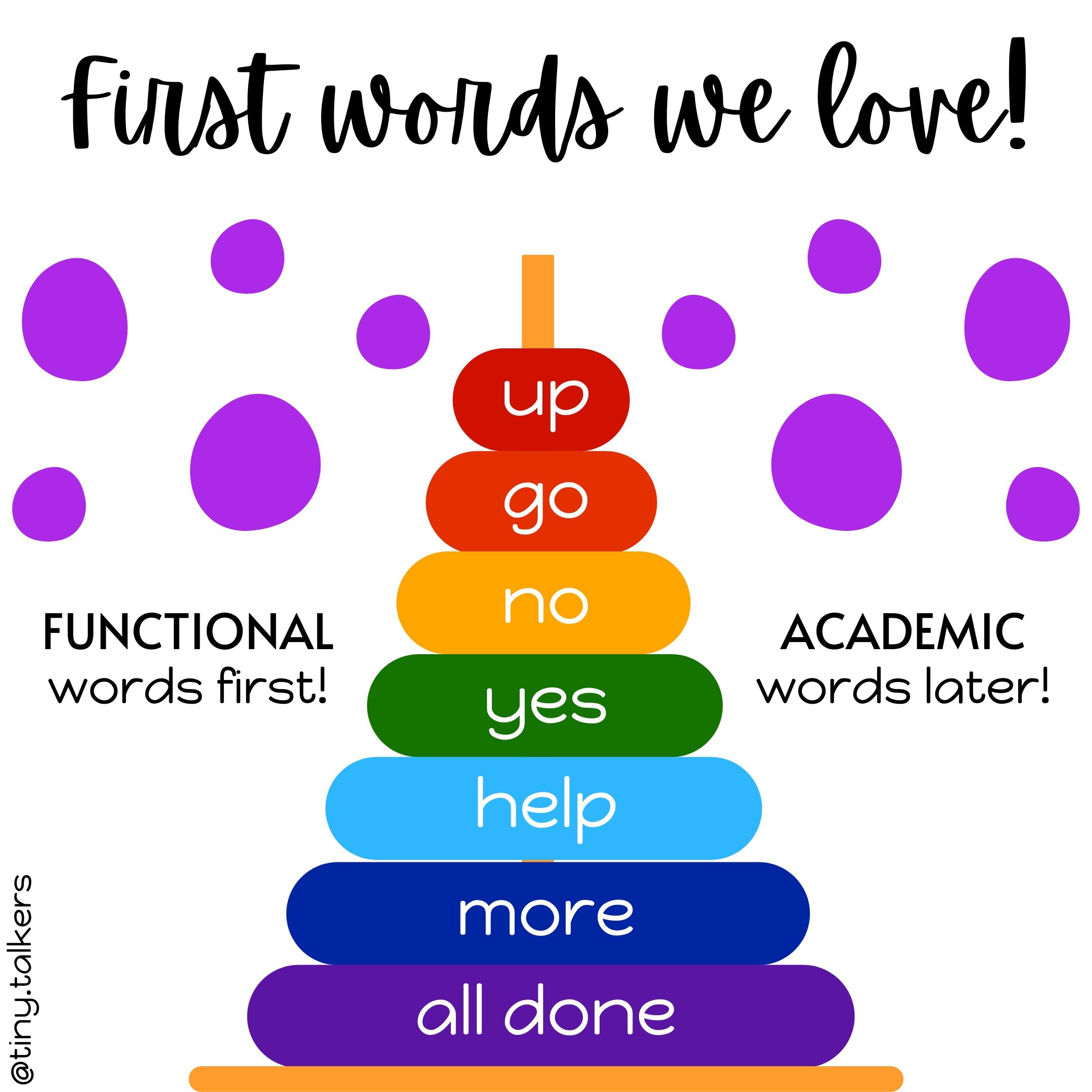Functional first words: What are they? Why do they matter?
What are functional words?
When your baby or toddler is just beginning to say words, you may notice that they get frustrated when they can’t tell you what they want or need. It will take some time for enough specific words to develop for them to be able to express all their ideas, however, focusing on 𝘍𝘜𝘕𝘊𝘛𝘐𝘖𝘕𝘈𝘓 words can make a difference! While it's impressive when tots know colors, letters, numbers, and the names of every object, we want them to be able to use words that will 𝘏𝘌𝘓𝘗 them function in their day-to-day. Over time, your little one will begin to develop a wide variety of words in their vocabulary, which will eventually be combined into phrases and sentences!
As you begin to model words for your emerging talker, think about what will be useful to them. What are the words they need to know to communicate their wants and needs with you? With objects, start with those that are most meaningful to them (pacifier, lovies, blankets, etc.!). Also, think about times they may need help, and what words could make things easier.
You can also teach your child functional words that they say verbally, or by using signs and gestures! For many little ones, it can take time to be able to verbally say a word. Sign language is one way to help toddlers express themselves, especially with functional words! Check out our post on baby sign language to learn more.
What words should you focus on first?
While some words may vary for each child, below are words we love to reinforce with babies:
𝘸𝘢𝘯𝘵
𝘮𝘰𝘳𝘦
𝘶𝘱
𝘨𝘰
𝘯𝘰
𝘺𝘦𝘴
𝘢𝘭𝘭 𝘥𝘰𝘯𝘦
𝘩𝘦𝘭𝘱
𝘰𝘱𝘦𝘯
𝘦𝘢𝘵
𝘮𝘪𝘭𝘬
𝘮𝘰𝘮𝘮𝘺
𝘥𝘢𝘥𝘥𝘺
What can you do to get your little one using these words?
To get your toddler to say new words, there are a few key things that are helpful:
REPEAT, REPEAT, REPEAT! Your child needs to hear words repeatedly to learn the word, and even more to be able to repeat the word back! The more often you can use a new word, the better! In fact, research shows that when a new word is used in consecutive sentences (versus sporadically), they learn vocabulary faster! For example, “I have more milk! Do you want more? Let’s put more milk in your cup!” By saying the word more in three sentences in a row, we provide repeated exposure!
Place EMPHASIS on the word you want your little one to use! Yes, you can repeat the word, but your toddler is more likely to attend to the word if you make it stand out from the rest! Slow down and exaggerate the word you want your child to notice! If the word applies to an emotion, change the tone of your voice to help express the meaning.
Use GESTURES, ACTIONS, or OBJECTS when you say the word! The more meaning you can attach to a new word, the better. Linking a new word to a gesture, action, or object is one more way that you can help your child learn new vocabulary. Say “open” while you open a box! Shake your head “no” while you say the word. Hold your arms up, while you say “up!”
As with any new skill, patience is key. It may take time for your toddler to say the word you are teaching them. That’s ok! Keep your language simple and stay consistent. Talk, talk, talk to your child! They learn so much from hearing all the language you use with them!
If you find you have concerns about your child’s development, or it doesn’t seem like they are meeting milestones like they should, always discuss them with your pediatrician!


